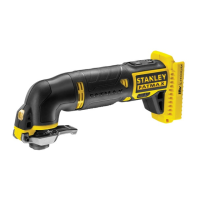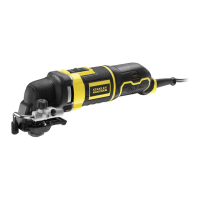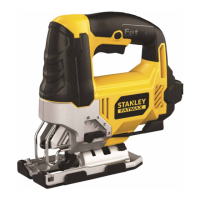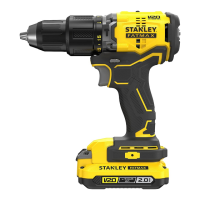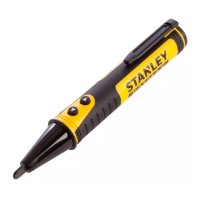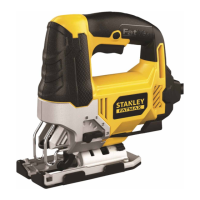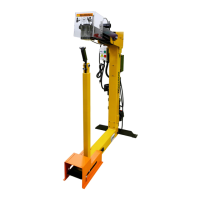9
ENGLISH
(Original instructions)
u Injuries caused by touching any rotating/moving parts.
u Injuries caused when changing any parts, blades or ac-
cessories.
u Injuries caused by prolonged use of a tool. When using
any tool for prolonged periods ensure you take regular
breaks.
u Impairment of hearing.
u Health hazards caused by breathing dust developed when
using your tool (example:- working with wood, especially
oak, beech and MDF.)
Noise and vibration
The declared noise and vibration emission values stated in
the technical data and the declaration of conformity have been
measured in accordance with a standard test method provided
by EN60745 and may be used for comparing one tool with
another. The declared noise and vibration emission value may
also be used in a preliminary assessment of exposure.
Warning! The noise and vibration emission value during
actual use of the power tool can differ from the declared value
depending on the ways in which the tool is used. The noise
and vibration level may increase above the level stated.
When assessing noise and vibration exposure to determine
safety measures required by 2002/44/EC to protect persons
regularly using power tools in employment, an estimation
of noise and vibration exposure should consider, the actual
conditions of use and the way the tool is used, including taking
account of all parts of the operating cycle such as the times
when the tool is switched off and when it is running idle in
addition to the trigger time.
Labels on tool
The following symbols are shown on the tool along with the
date code:
:
Warning! To reduce the risk of injury, the user
must read the instruction manual.
Warning! To reduce the risk of injury, the user
must wear ear and eye protection.
Caution: Do not stare at operating lamp.
To illuminate the immediate work surface as well
as a low battery indicator and a jammed nail
indicator.
Keep hands and body parts clear of
immediate work area.
Additional safety instructions for batteries and
chargers
Batteries
u Never attempt to open for any reason.
u Do not expose the battery to water.
u Do not store in locations where the temperature may
exceed 40 °C.
u Charge only at ambient temperatures between 10 °C and
40 °C.
u When disposing of batteries, follow the instructions given
in the section "Protecting the environment".
u Do not damage/deform the battery pack either by puncture
or impact, as this may create a risk of injury and re.
u Do not charge damaged batteries.
u Under extreme conditions, battery leakage may occur.
When you notice liquid on the batteries Carefully wipe the
liquid off using a cloth. Avoid skin contact.
u In case of skin or eye contact, follow the instructions
below.
Warning! The battery uid may cause personal injury or
damage to property. In case of skin contact, immediately rinse
with water. If redness, pain or irritation occurs seek medical
attention. In case of eye contact, rinse immediately with clean
water and seek medical attention.
p
Do not attempt to charge damaged batteries
Chargers
u Use your STANLEY FATMAX charger only to charge the
battery in the tool with which it was supplied. Other
batteries could burst, causing personal injury and damage.
u Never attempt to charge non-rechargeable batteries.
u Have defective cords replaced immediately.
u Do not expose the charger to water.
u Do not open the charger.
u Do not probe the charger
Symbols on charger
$
The charger is intended for indoor use only.
+
Read the instruction manual before use.
Electrical safety
#
Your adapter is double insulated; therefore no
earth wire is required. Always check that the
mains voltage corresponds to the voltage on the
rating plate. Never attempt to replace the adapter
unit with a regular mains plug.
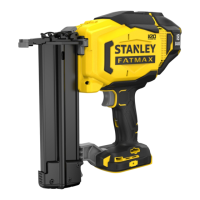
